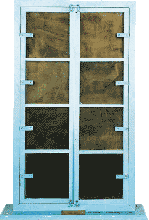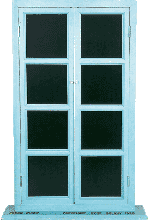|
by Jim Hausman responds
to Rhonda Roland Shearer's
|
|||||||||||||||||||||
|
To Rhonda Roland Shearer - Contrary to your comment on "Fresh Widow," French windows *do* open in -- that way the shutters can open out!
Jim
Hausman
Rhonda Roland Shearer responds: Dear Jim Hausman, Please send us photographs of your local French windows. We're interested. Below, you'll find two illustrations (Fig. 3 and Fig. 4, pp. 1024, 1025) from De Chiara, Joseph, Julius Panero and Martin Zelnik (eds.) Time Saver Standards for Interior Design and Space Saving (New York, McGraw-Hill, 1991). These refernces are among those that led me to my claim that French windows swing outwards. Please note captions and text below:
In the book History of Interior Design and Furniture (New York: Van Nostrand Reinhold, 1997), author Robbie G. Blakemore writes that starting in the second half of the 17th century, windows "sometimes rose from the floor to almost ceiling level and had double valves (sometimes termed French windows), in which the casements pivoted from the jamb […] When wood frames replaced the stone transoms and mullions and with rectangular panes it was possible for the casements to open outward." (p. 164).
Figs.
1, 2
|
|||||||||||||||||||||
















